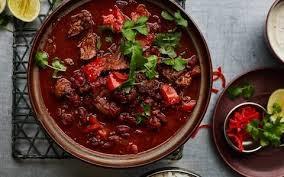
3 minute read
Picture Quiz
by drjvale
British wild mammals picture quiz
To celebrate our wonderful British wildlife, here is another silly picture quiz! This month, we’re looking at British wild mammals, taking advantage again of full colour in this fifth digital edition of Signpost.
Advertisement
How many can you identify in the grid below? Some a little more ‘lateral’ than others! By all means, compare notes and hints with friends, family and colleagues! This photo quiz will also be posted on my Facebook page: https://www.facebook.com/drredfinrods .
Answers to be published in the October edition of Signpost. Mark Everard


It seems strange to talk about chillies when the weather is changing and isn’t so dry and hot as it has been. Chillies are relatively easy to grow and there are thousands of different varieties to choose from. However, most are from the same species, Capsicum annum, and are a member of the nightshade family that includes tomatoes and potatoes.
Chillies have been part of the human diet for thousands of years and can be traced back as far as 7500BC in the Americas. Recent research into chilli peppers has found they were d o m e s t i c a t e d more than 6000 years ago in Mexico.
They are a natural irritant. The Aztecs would burn them and use them like modern day pepper spray. Nottingham Trent University has researched their use in pain relief, looking at their potential for use in anaesthetic. As chillies have the ability to numb the skin it is possible that a chilli oil extract could be used on patients who cannot otherwise tolerate other anaesthetics or in countries where pain relief is too expensive.
Peppers are broken down into three groups: bell, sweet & hot. It is astonishing that the mild bell peppers are the same species as the super-hot Carolina Reaper chilli.
Capsaicin and related compounds, Capsaicinoids, give the chilli peppers their intensity when eaten. Water stressed peppers usually produce the stronger intensity with those plants increasing the concentration of capsaicin in some parts of the fruit.
When you bite into a raw or cooked chilli, capsaicin binds with pain receptors in the mouth and throat. This evokes pain, which is sent via spinal relays to the brainstem and thalamus where heat and discomfort are perceived. One way to alleviate the pain is to drink milk as it has a fat loving compound called casein. This binds with the capsaicin oil and washes it away. Alternatively, you could try drinking Tequila. 10 shots might do it. Water, however, will never put the fire out.
The intensity or the heat of the chilli is recorded on the Scoville heat units scale or SHU for short.
The peppers most of us know, like the Bell Pepper have no heat units, the Jalapeño has 10,000 units, Cayenne, 50,000 units, Piri Piri has 100,000 units, and the Scotch Bonnet & Bird’s eye have 350,0000 units
In 2013 the Carolina Reaper was grown in the USA and has 2.2 million units making it the hottest so far. The Komodo Dragon, 1.4 million, Naga Viper, 1.382 million, 7 Pot Infinity Chilli 1.176 million and the Bedfordshire Super Naga, 1.12 million units all come from the UK. As a nation we consume 12 thousand tonnes annually of this amazing fruit; yes, it’s a fruit. We use them fresh, dried or pickled. Chillies are often used to make hot sauce like, Harissa & Sriracha and even chilli chocolate.


Top Tip:
Just be aware if you do use fresh chillies make sure you have thoroughly washed you hands before doing anything else, as it will sting.
Deborah Loader




